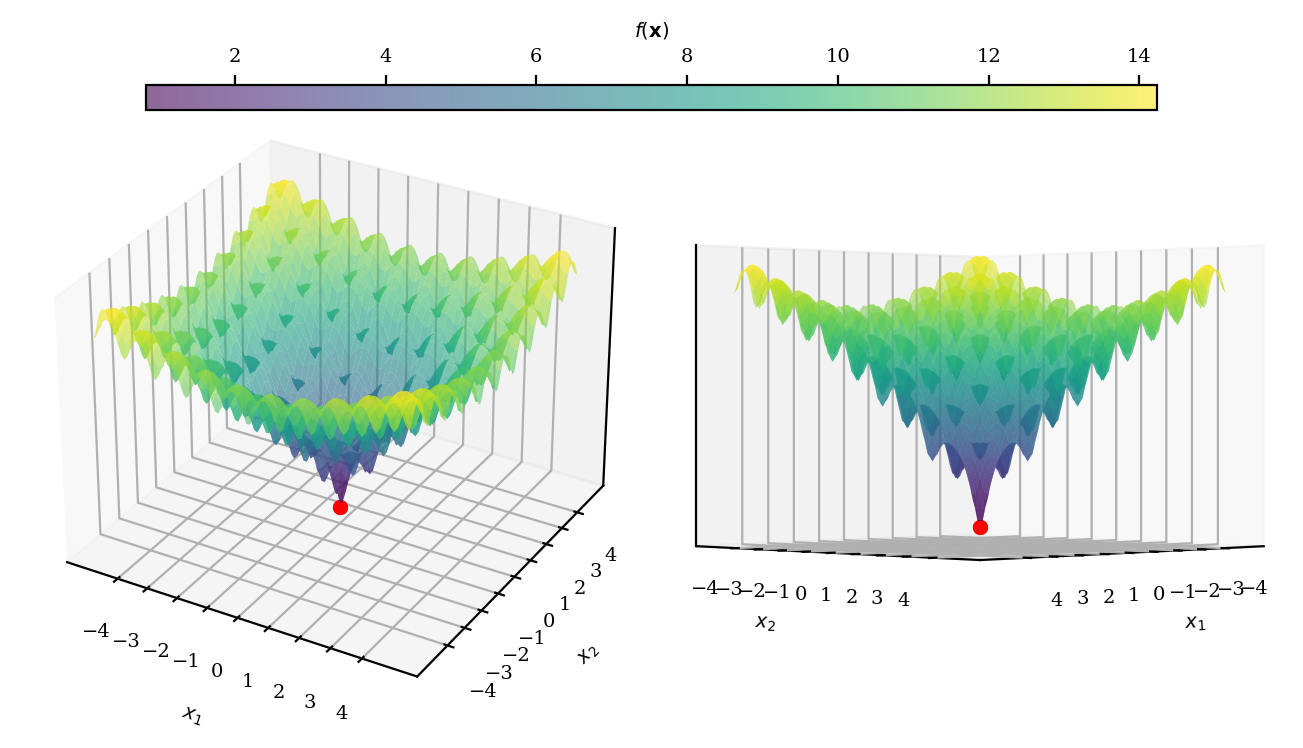Ackley no.4 Function
The Ackley no.4 function is a non-continuous, non-convex, non-separable, differentiable, multimodal function often used to assess the performance of optimization algorithms.

Python code
> The complete python code for the example can be found in ./examples/example_ackley.py
1. Import required libraries and the optimizers:
from QOPT.QuantumPSO import QuantumPSO
from QOPT.QuantumPMSO import QuantumPMSO
import numpy as np
2. Define the Ackley function:
def ackley(x):
x = np.array(x)
return -20 * np.exp(-0.2 * np.sqrt(1. / len(x) * np.sum(x** 2))) - np.exp(
1. / len(x) * np.sum(np.cos(2 * np.pi * x))) + 20 + np.e
With the current implementation the function has its minimum at $\textbf{x}=[0,0]$.
3. Set up the optimizers and run the optimization:
NParticle = 40
maxiter = 100
NDim = 2
lb = np.array([-5,-5]) ; ub = np.array([5,5])
alpha_min = 0.5
alpha_max = 1.0
sampling = 'LHS'
nworker = 1
# Quantum-behaved Particle Swarm Optimization
optimizer1 = QuantumPSO(
function=ackley,
nparticles=NParticle,
dim = NDim,
lower_bound=lb,
upper_bound=ub,
maxiter=maxiter,
sampling_method = sampling,
alpha_min=alpha_min,
alpha_max=alpha_max,
nworkers=nworker,
tolerance=1e-6,
maxiter_below_tolerance=30,
particle_type = 'Sun-Type1')
optimizer1.update()
# Quantum-behaved Particle Multi-Swarm Optimization
NParticle = 20
nswarms = 2
beta_min = 0.1
beta_max = 0.8
optimizer2 = QuantumPMSO(
function=ackley,
nparticles=NParticle,
dim = NDim,
lower_bound=lb,
upper_bound=ub,
maxiter=maxiter,
sampling_method = sampling,
alpha_min=alpha_min,
alpha_max=alpha_max,
beta_min=beta_min,
beta_max=beta_max,
nworkers=nworker,
tolerance=1e-6,
maxiter_below_tolerance=30,
nswarms=nswarms)
optimizer2.update()